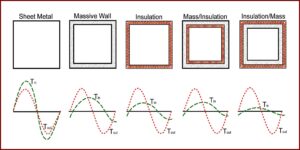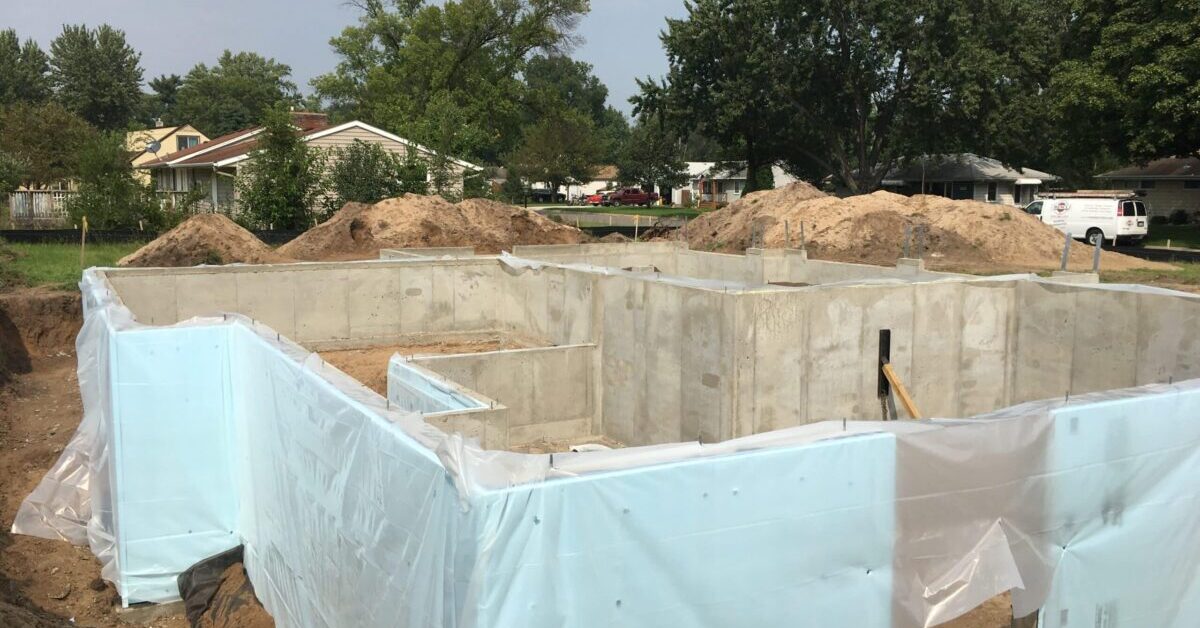Insulation for Comfort & Efficiency
Insulation upgrades are the next part of the Energy Star Zero Energy Ready Home build we will cover. This will be broken up into below-ground, the EcoSmart exterior wall system, attic insulation, and windows.
These are all passive and long-term elements of the build. Windows should last 30-40 years before they need replacing. Below-ground insulation, the EcoSmart exterior wall system, and the attic insulation are designed to provide lasting comfort and energy savings for the lifetime of the building.
Why Foundation & Basement Insulation Matter
First up is foundation insulation. These builds here in Minnesota are going to have basements, which is different from a lot of the country, where new homes are built slab-on-grade style. The same principles apply: insulate the foundation to keep the home more comfortable and use less energy.
A properly installed basement insulation system helps regulate the temperature of the home year-round and protects against energy loss. Whether you’re building new or retrofitting, insulating basement walls helps reduce moisture, prevent mold growth, and increase energy efficiency.
Basement Wall Insulation Requirements for ZERH
Here in Minnesota, the current code is an R-10 on the outside of the foundation, whether it is slab on grade or basement style. For the Energy Star program, the slab on grade remains R-10, but the full basement wall insulation requirement jumps to R-15, so there is a difference in cost between the two styles of foundations.
For the Energy Star ZERH, building both slab-on-grade and the entire basement requires an R-15 outside the foundation. For the basement style of the foundation, you can mix the insulation outside of the foundation wall and inside. While the program allows for this, I would recommend against it, except in retrofit situations. It’s much better to have that block or poured wall warmer and take advantage of the thermal mass. Plus, it also gives the homeowner more choices on how to finish the basement—especially important when the basement insulation is high-performance and contributes to comfort.
As seen in the chart below, when the thermal mass is on the inside of the insulation, it is more effective at keeping the basement at a consistent temperature as the weather outside changes.

Temperature Control with Proper Basement Insulation
Here in Minnesota, where the air temperature can get down to -30 below zero during the winter, the other bonus to a full basement is that the dirt on the other side of the foundation wall can only drop to 32 degrees in the middle of winter. During the summer, the soil temperature usually tops out around 74 degrees. A well thought out basement insulation plan makes it very easy to keep at a constant temperature.
This is why basement wall insulation is more than just an energy upgrade—it’s a comfort and performance upgrade, too.
Cost of Upgrading Foundation Insulation
The foundation insulation cost upgrade for the build is $995. Labor stays the same; it’s just the cost difference between the 2″ and 3″ thick rigid foam panels that go around the foundation wall. Investing in high-quality basement insulation upfront leads to long-term savings and energy performance that aligns with Energy Star ZERH goals.
Up Next: Attic Insulation
Stay tuned as we dive into the next layer of the thermal envelope—attic insulation—where we’ll cover R-60 strategies and cost-effective solutions for ceiling insulation and long-term energy savings.
